Midcentury modernist enclaves on the East Coast uncovered in smart travel guide
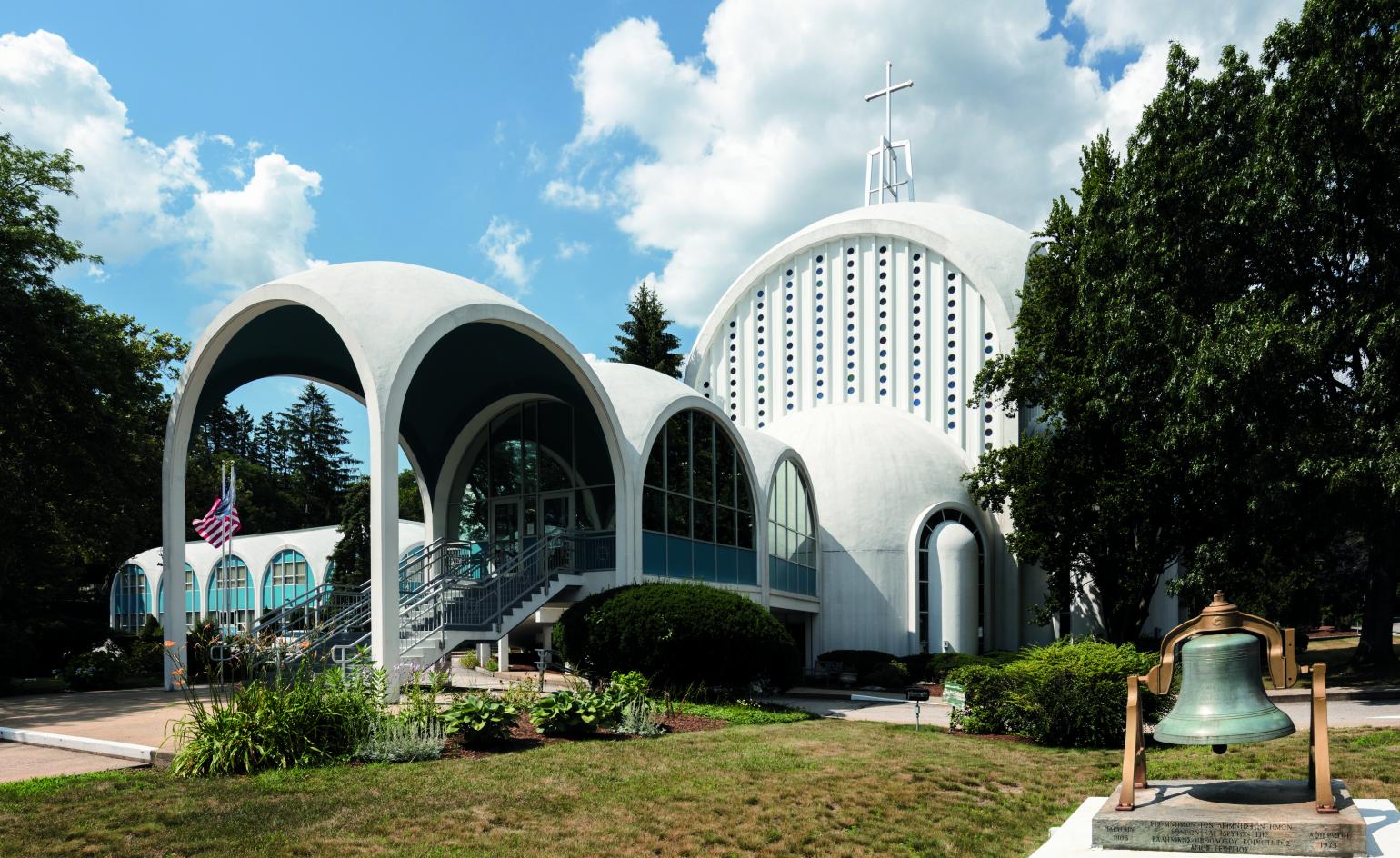
For the residents of Palm Springs – and those who flock to the desert enclave for the annual Modernism Week – midcentury desert modernism is more than an architectural style, it’s a lifestyle choice. No other architectural sub-style has managed to capture such a distinct culture alongside it, yet author Sam Lubell and photographer Darren Bradley went on an East Coast search and found some strong contenders, notably, Sarasota.
Following a trail from Maine to Florida, Lubell and Bradley collated a neat travel guide of midcentury modern buildings down the East Coast. They sought out lesser known examples, each uniquely adapted to their geographical contexts and promoting an equally unique sub-style of modernism, from organic, to space-aged and classical.

Horgan Academy of Irish Dance, Alexander and Nichols, 1964, Naugatuck, Connecticut, US (page 68). Photography: Darren Bradley
During Palm Springs Modernism Week 2019, the pair will host an event exploring the various degrees of midcentury modernism, revisiting some of the 250 projects highlighted in the book where you can find directions and information for visiting, and admiring each midcentury masterpiece. We couldn’t wait to find out more...
Wallpaper*: What was your definition of ‘midcentury modernism’ when creating this book? Is it a time frame, a style or a feeling?
Sam Lubell: We took a wide definition of midcentury modernism, encompassing several modern styles and philosophies from the late 1930’s through the early 1970s. All modernist styles embraced the future, employed modern technologies, and clearly expressed their materials and functions. Many people conflate midcentury modern with the simple glass, concrete and steel forms of the international style, which grew out of an industrial vernacular and collective spirit and were later co-opted through so-called ‘corporate modernism’. But it played out in many more ways, following many muses, including natural-inspired organic modernism, space-aged googie, classically-modeled new formalism, concrete-loving brutalism, biologically-organised metabolism and much more.
Greater Refuge Temple, Costas Machlouzarides, 1968, New York, New York, US (page 119). Photography: Darren Bradley
W*: What was the most unexpected challenge you encountered on your travels down the coast?
Darren Bradley: Normally, as an architectural photographer, I do a lot of planning and have lots of time and unlimited access to a building that I'm photographing. But for a book like this, we were traveling from city to city down the coast. I was often photographing buildings that I was seeing for the first time, with little or no advanced notice, and in all weather and light conditions. Sometimes, I'd be harassed by security guards, or have to shoot around road construction in front of the building. Inevitably, large delivery vans seemed to always be parked right in front, etc. Murphy's Law happened more often than not. Regardless of the conditions, I had to figure out how to make it work, and get the shot. And I usually only had a few minutes in each location, and no chance to do it over again.
W*: Were there any buildings that didn’t make the cut that you want to shout out?
DB: There were several buildings that we couldn't include simply because they are not visible from the street or open to the public. The personal residence of IBM designer Eliot Noyes in New Canaan, Connecticut is one of them. Sam and I had the privilege of visiting the house on one of our trips, but we couldn't put it in the book. It is beautiful, and in perfect original condition.
W*: Did you discover the distinct breed of Palm Springs ‘desert modernism’ elsewhere in any other buildings? Or is it totally distinct and if so, why do you think this is?
DB: Good modernist architecture is usually pretty well adapted to its environment and climate. The modernist architecture of Palm Springs is designed for the desert, with flat or low-gabled rooflines that provide deep overhangs for lots of shade. They aren't worried about snow, ice, rain, or even mosquitos or other bugs. It never gets very cold, either. There aren't any deserts on the east coast, obviously, and so you don't find many Palm Springs-style houses. Surprisingly, we did find a few, though. There's one example in the book on Cape Cod, strangely enough. But it's a vacation home that's only used in the summer, I think. There are also some homes in Florida that are similar... I guess Florida is probably the closest – although more rain there, and more bugs.
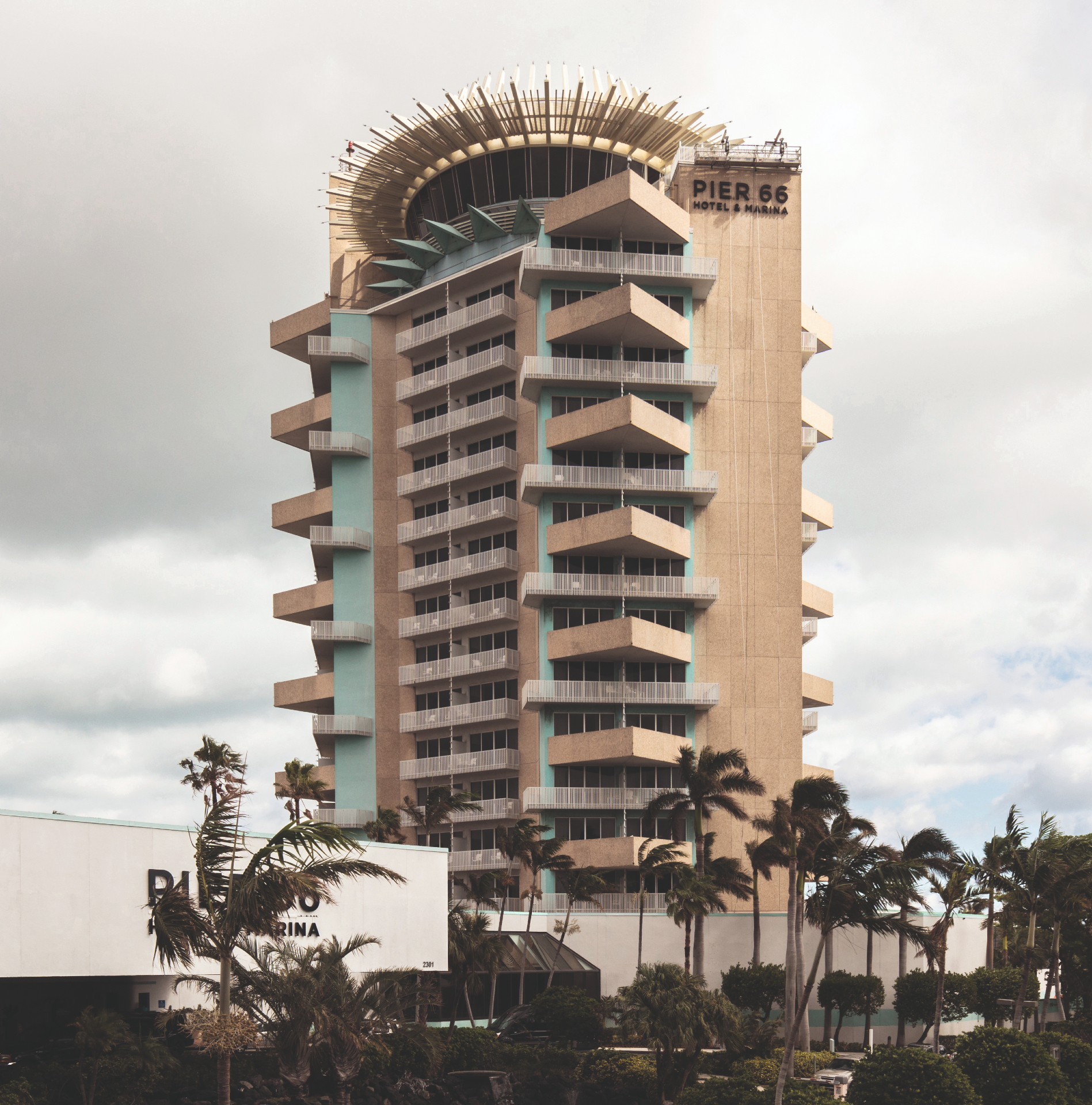
Pier Sixty Six, Richard F. Humble, 1957, Fort Lauderdale, US. Photography: Darren Bradley
Receive our daily digest of inspiration, escapism and design stories from around the world direct to your inbox.
W*: Palm Springs is synonymous with midcentury modernism. Is there an East Coast enclave with similar potential?
SL: There are several notable modernist enclaves along the East Coast, including New Canaan, CT, Litchfield, CT, Raleigh, NC, and of course major cities like New York, Boston, Miami and Washington. But the closest to Palm Springs in scale and climate is Sarasota, where a glut of talent, a future-loving spirit and progressive clients like Philip Hiss combined to create a must-see variety of modernist buildings.
Some of my favourites include Paul Rudolph’s Sarasota High School and Umbrella House, Victor Lundy’s St Paul’s Lutheran Church and Heron House, and the work of other noted modernists like Ralph Twitchell, Taliesen Associated Architects, Tim Seibert, Gene Leedy and more. Sarasota even hosts its own version of Modernism Week, SarasotaMOD Weekend, which takes place in the Fall.
W*: Can you describe your Palm Springs highlight to date?
SL: My Palm Springs highlight to date was our Modernism Week talk at the Ace Hotel two years ago for the West Coast Guide. Every seat was filled, and the audience was vocally passionate about modernism, and our exploration of it. The line for the book signing portion lasted about an hour. Those in line asked great questions and suggested useful projects for future guides. People who come to Modernism Week have an incredible understanding of what makes this time period, and these designs, so special, and it’s always a pleasure to interact with them. §
On the Road: Visiting East Coast Midcentury Modernism’ takes place at the Modernism Week CAMP Theater on 20 February 2019. See more news and highlights from Palm Springs Modernism Week here.
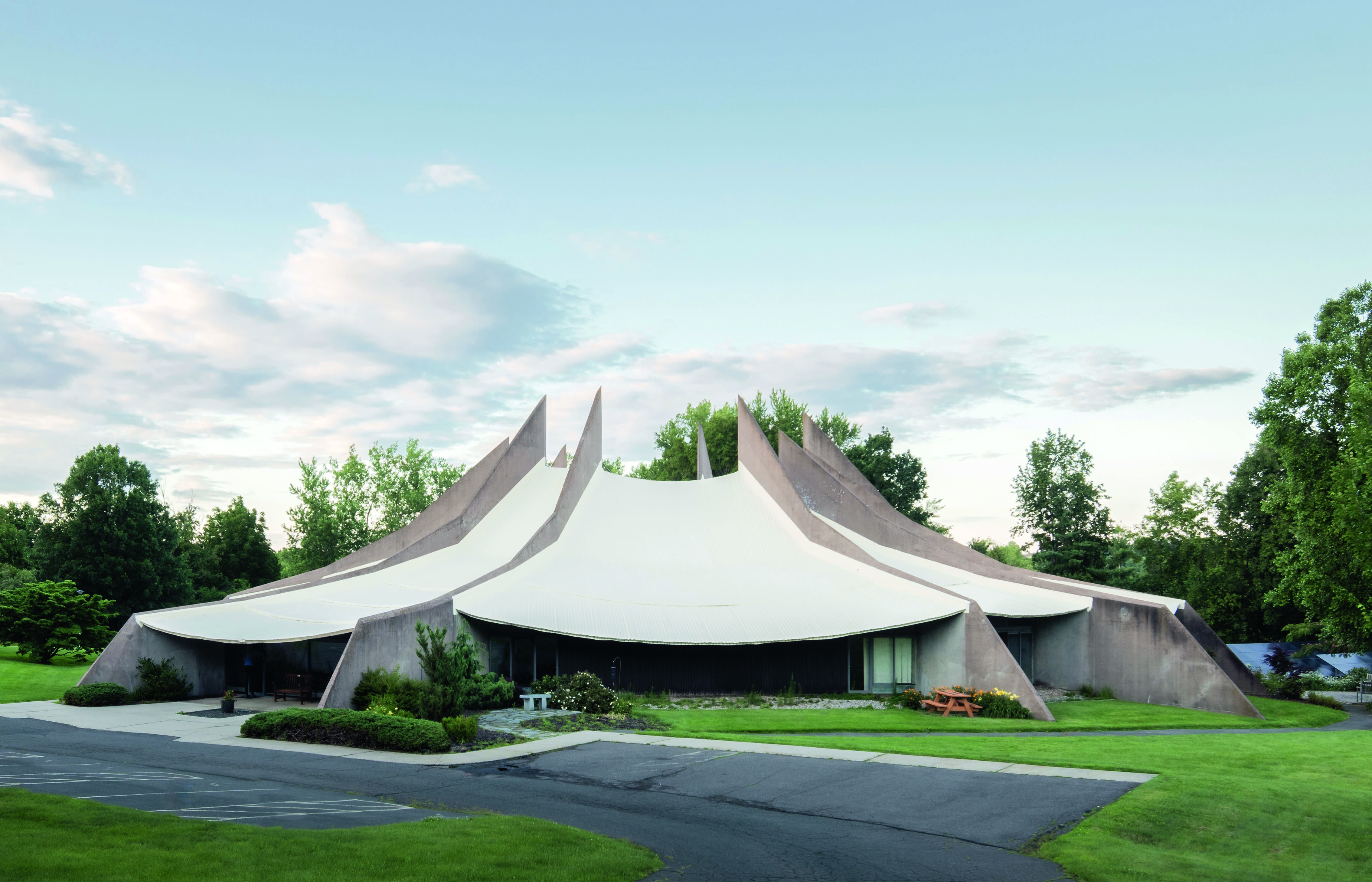
Unitarian Meeting House, Victor Lundy, 1962, Hartford, Connecticut, US (page 61).

Decatur High School, Bothwell and Nash, 1965, Decatur, Georgia, US (page 269).
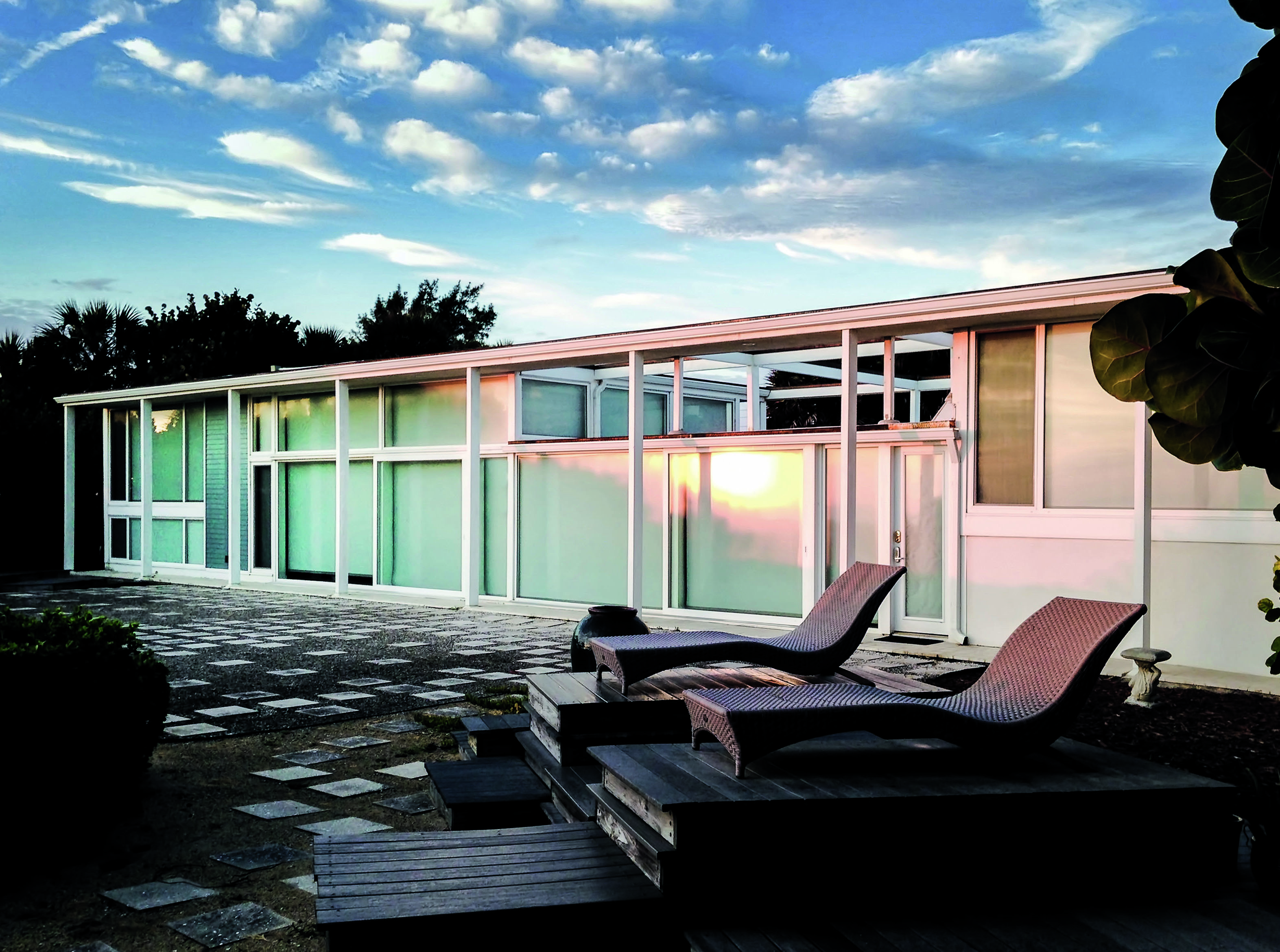
W. W. Kerr Residence, Paul Rudolph, 1951, Melbourne Beach, Florida, US (page 292).
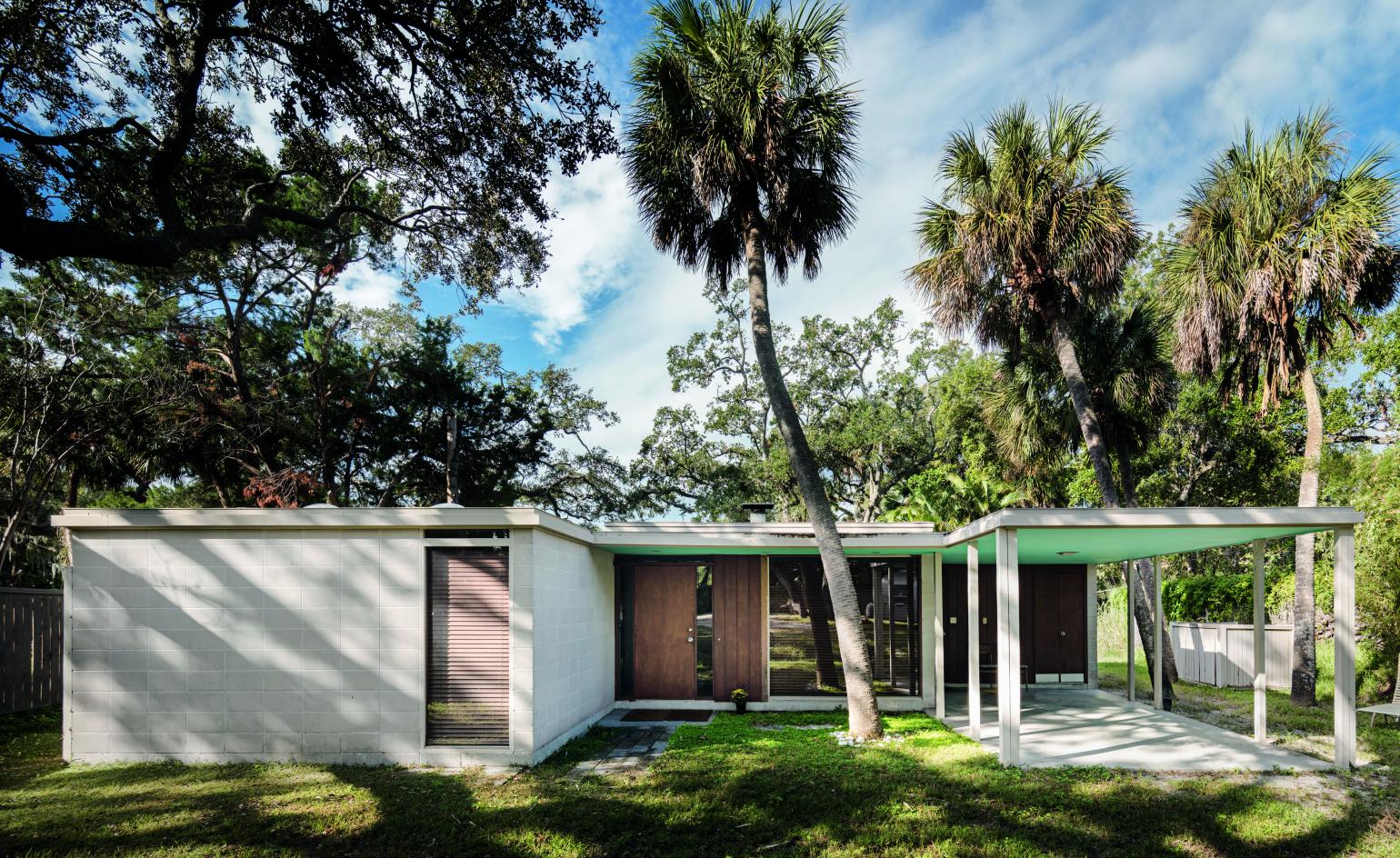
Lu Andrews House, Ralph Twitchell, 1969, Sarasota, Florida, US (page 293).

Umbrella House, Paul Rudolph, 1953, Sarasota, Florida, US (page 300).
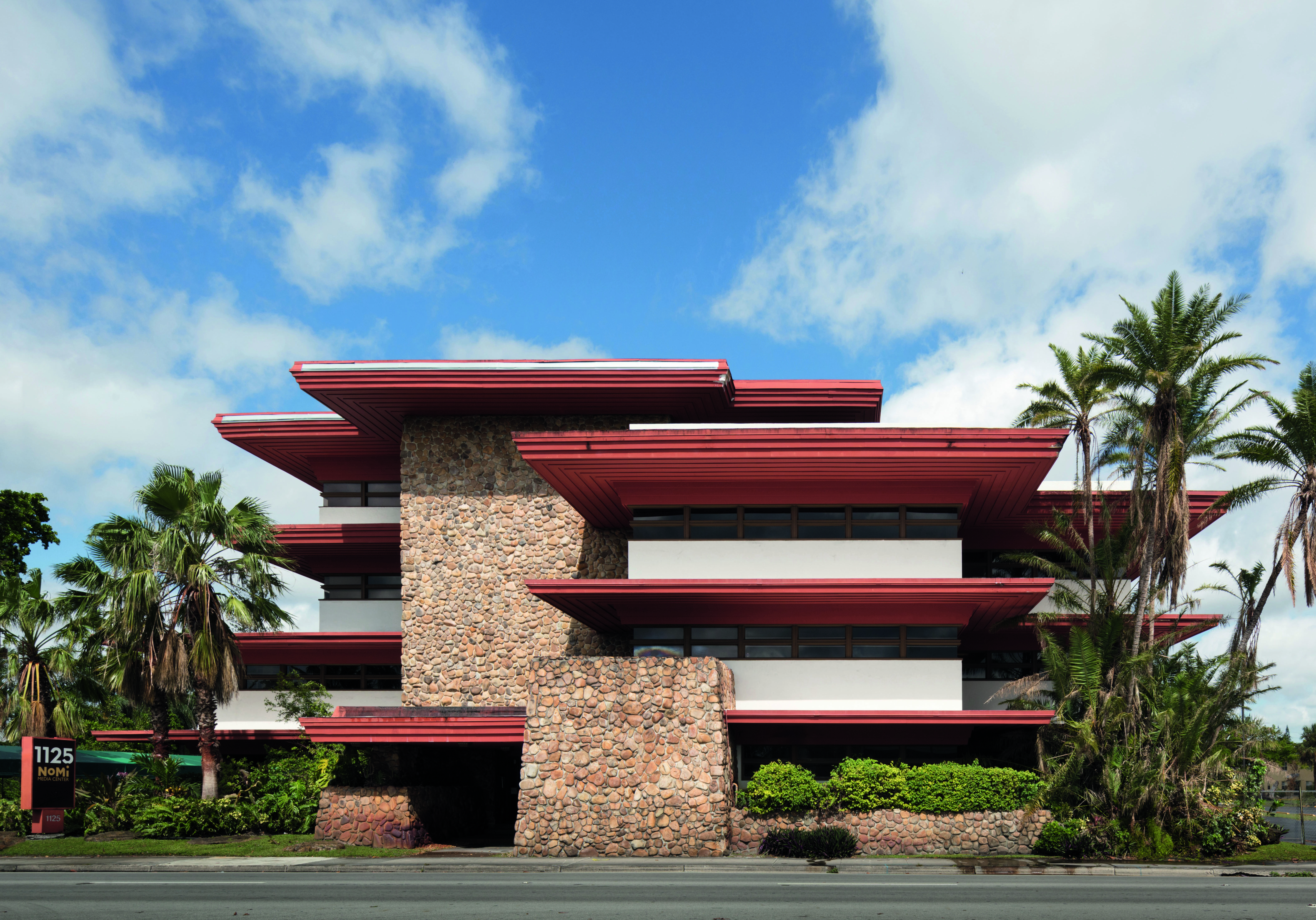
Mortgage Corporation of America Building, Carson Bennett Wright, 1971, Miami, Florida, US (page 316).

The cover of the mid-century travel guide for East Coast US from Phaidon
INFORMATION
For more information, visit the Wallpaper* Modernism Week 2019 highlights, the Phaidon website and the Modernism Week website
Harriet Thorpe is a writer, journalist and editor covering architecture, design and culture, with particular interest in sustainability, 20th-century architecture and community. After studying History of Art at the School of Oriental and African Studies (SOAS) and Journalism at City University in London, she developed her interest in architecture working at Wallpaper* magazine and today contributes to Wallpaper*, The World of Interiors and Icon magazine, amongst other titles. She is author of The Sustainable City (2022, Hoxton Mini Press), a book about sustainable architecture in London, and the Modern Cambridge Map (2023, Blue Crow Media), a map of 20th-century architecture in Cambridge, the city where she grew up.
-
 A tale of two Audis: the A5 saloon goes up against the A6 Avant e-tron
A tale of two Audis: the A5 saloon goes up against the A6 Avant e-tronIs the sun setting on Audi’s ICE era, or does the company’s e-tron technology still need to improve?
-
 Inside Christian de Portzamparc’s showstopping House of Dior Beijing: ‘sculptural, structural, alive’
Inside Christian de Portzamparc’s showstopping House of Dior Beijing: ‘sculptural, structural, alive’Daven Wu travels to Beijing to discover Dior’s dramatic new store, a vast temple to fashion that translates haute couture into architectural form
-
 A music player for the mindful, Sleevenote shuns streaming in favour of focused listening
A music player for the mindful, Sleevenote shuns streaming in favour of focused listeningDevised by musician Tom Vek, Sleevenote is a new music player that places artist intent and the lost art of record collecting at the forefront of the experience
-
 The Architecture Edit: Wallpaper’s houses of the month
The Architecture Edit: Wallpaper’s houses of the monthFrom wineries-turned-music studios to fire-resistant holiday homes, these are the properties that have most impressed the Wallpaper* editors this month
-
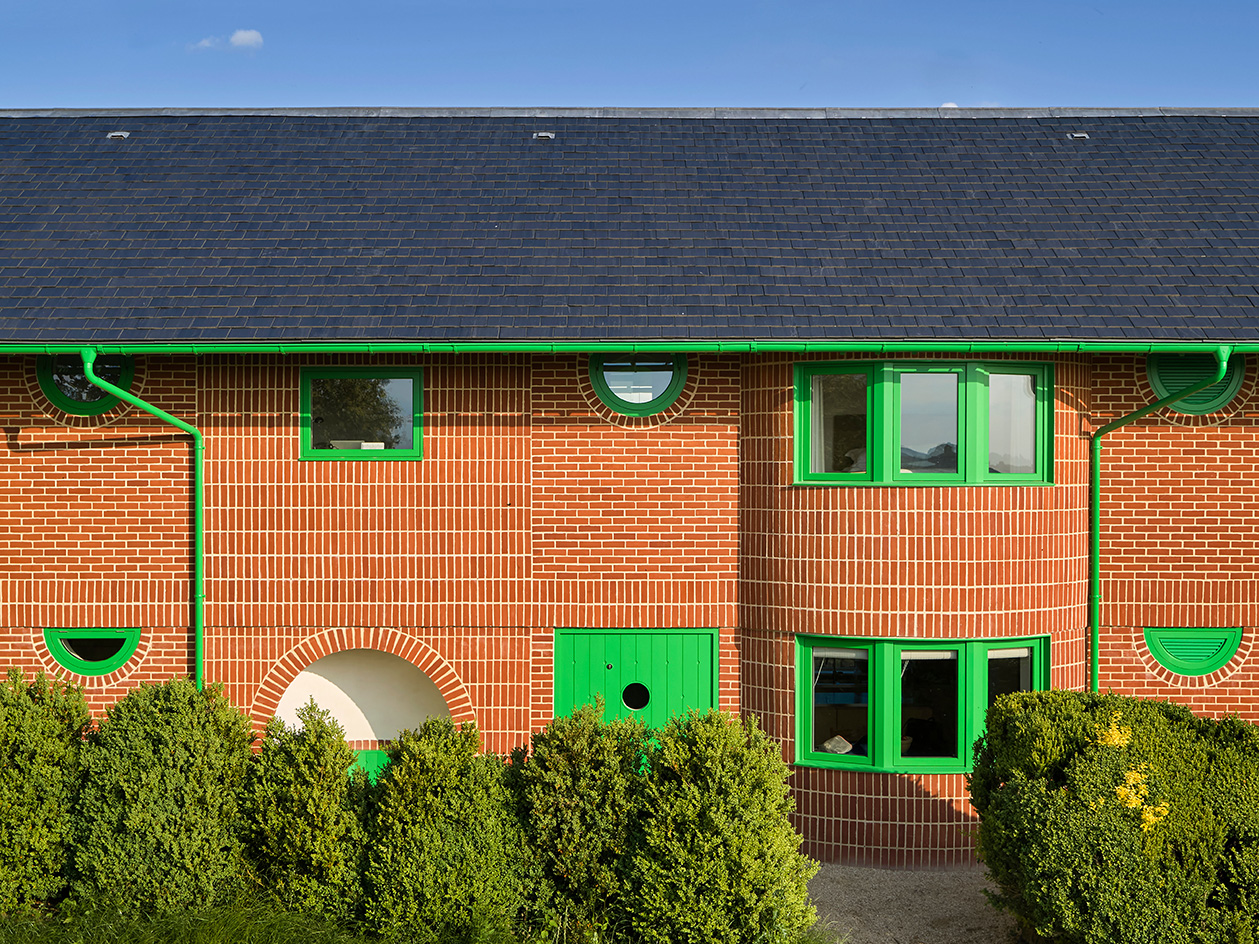 David Kohn’s first book, ‘Stages’, is unpredictable, experimental and informative
David Kohn’s first book, ‘Stages’, is unpredictable, experimental and informativeThe first book on David Kohn Architects focuses on the work of the award-winning London-based practice; ‘Stages’ is an innovative monograph in 12 parts
-
 The Stahl House – an icon of mid-century modernism – is for sale in Los Angeles
The Stahl House – an icon of mid-century modernism – is for sale in Los AngelesAfter 65 years in the hands of the same family, the home, also known as Case Study House #22, has been listed for $25 million
-
 This modernist home, designed by a disciple of Le Corbusier, is on the market
This modernist home, designed by a disciple of Le Corbusier, is on the marketAndré Wogenscky was a long-time collaborator and chief assistant of Le Corbusier; he built this home, a case study for post-war modernism, in 1957
-
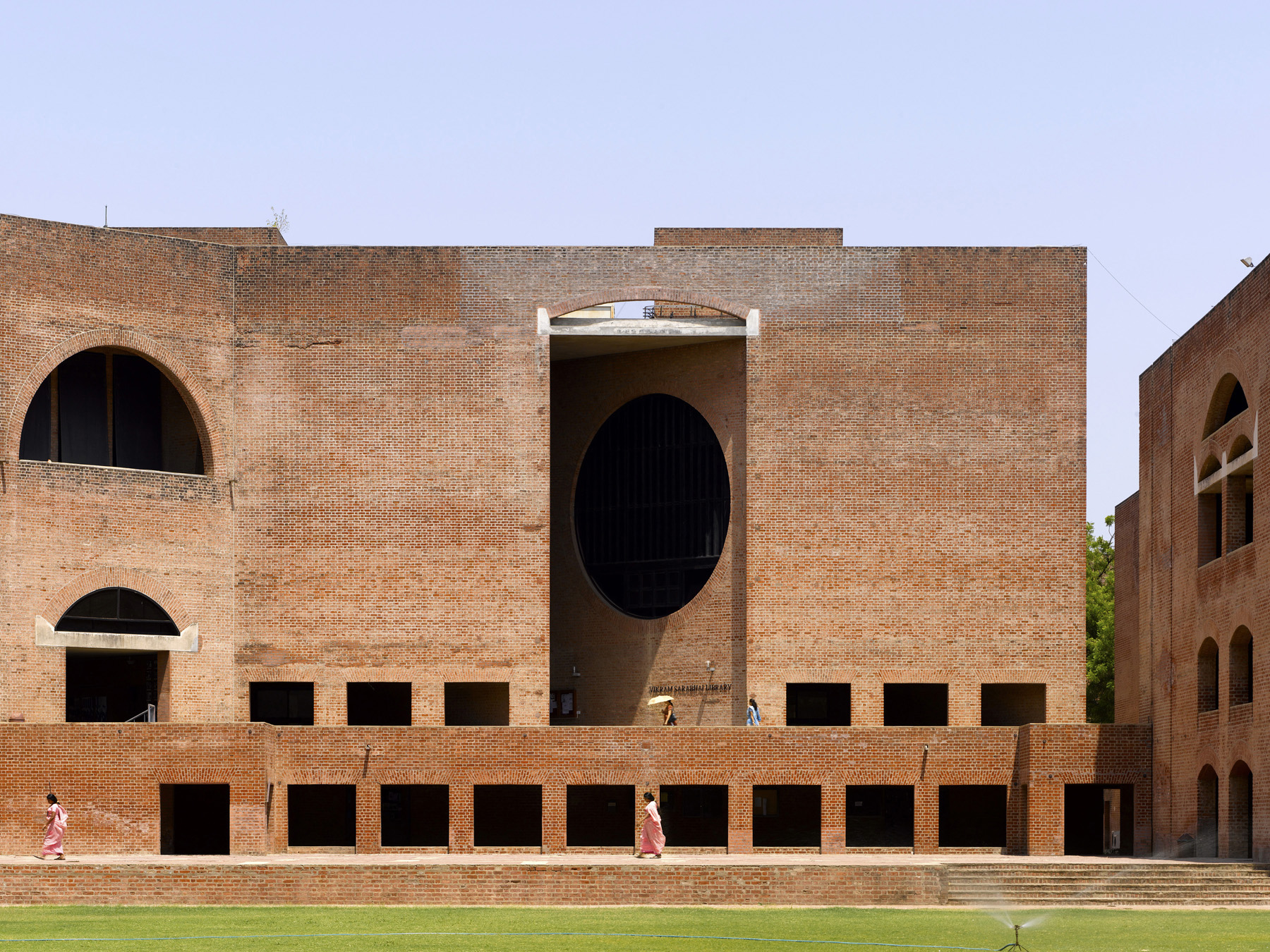 Louis Kahn, the modernist architect and the man behind the myth
Louis Kahn, the modernist architect and the man behind the mythWe chart the life and work of Louis Kahn, one of the 20th century’s most prominent modernists and a revered professional; yet his personal life meant he was also an architectural enigma
-
 The Architecture Edit: Wallpaper’s houses of the month
The Architecture Edit: Wallpaper’s houses of the monthFrom Malibu beach pads to cosy cabins blanketed in snow, Wallpaper* has featured some incredible homes this month. We profile our favourites below
-
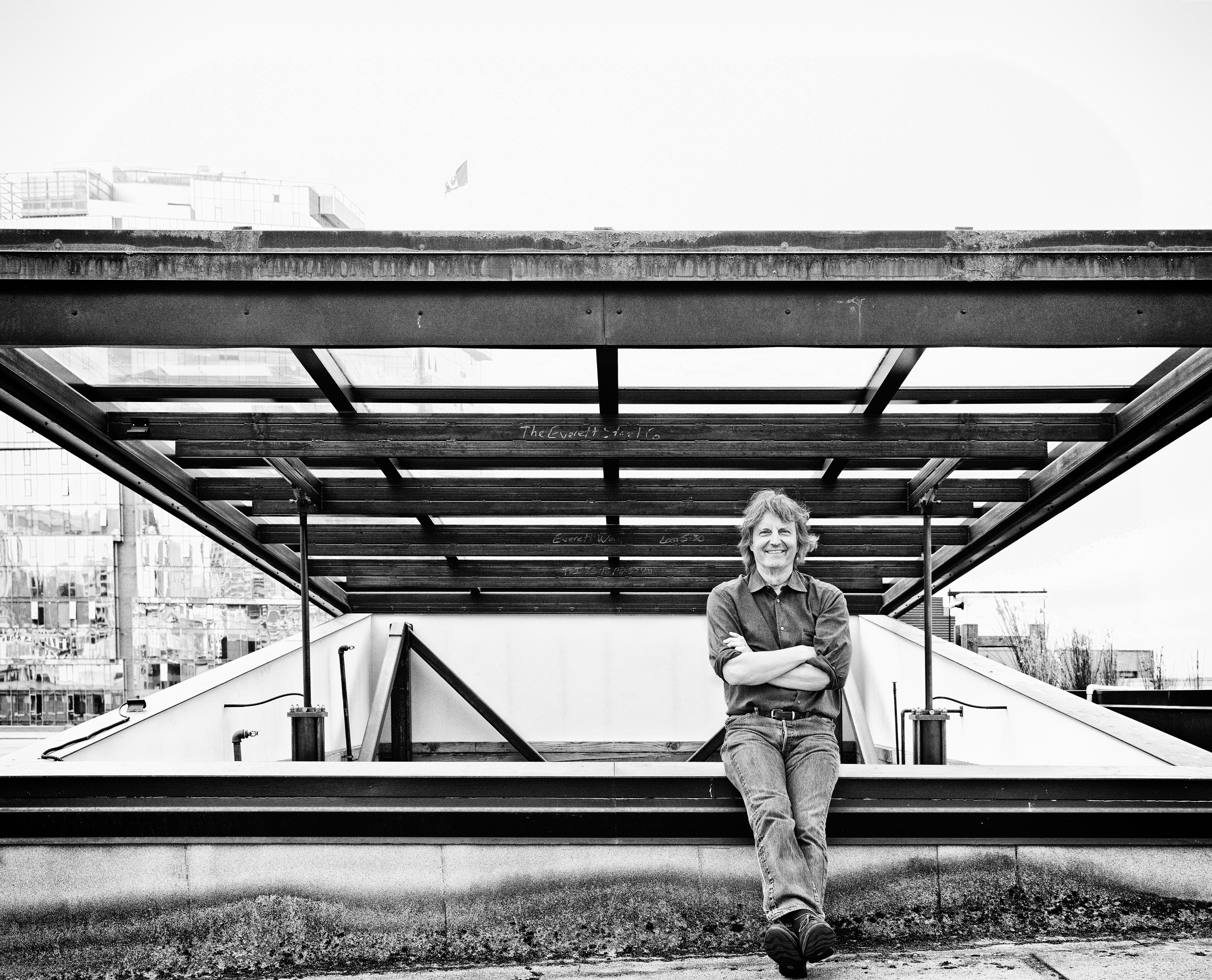 Explore Tom Kundig’s unusual houses, from studios on wheels to cabins slotted into boulders
Explore Tom Kundig’s unusual houses, from studios on wheels to cabins slotted into bouldersThe American architect’s entire residential portfolio is the subject of a comprehensive new book, ‘Tom Kundig: Complete Houses’
-
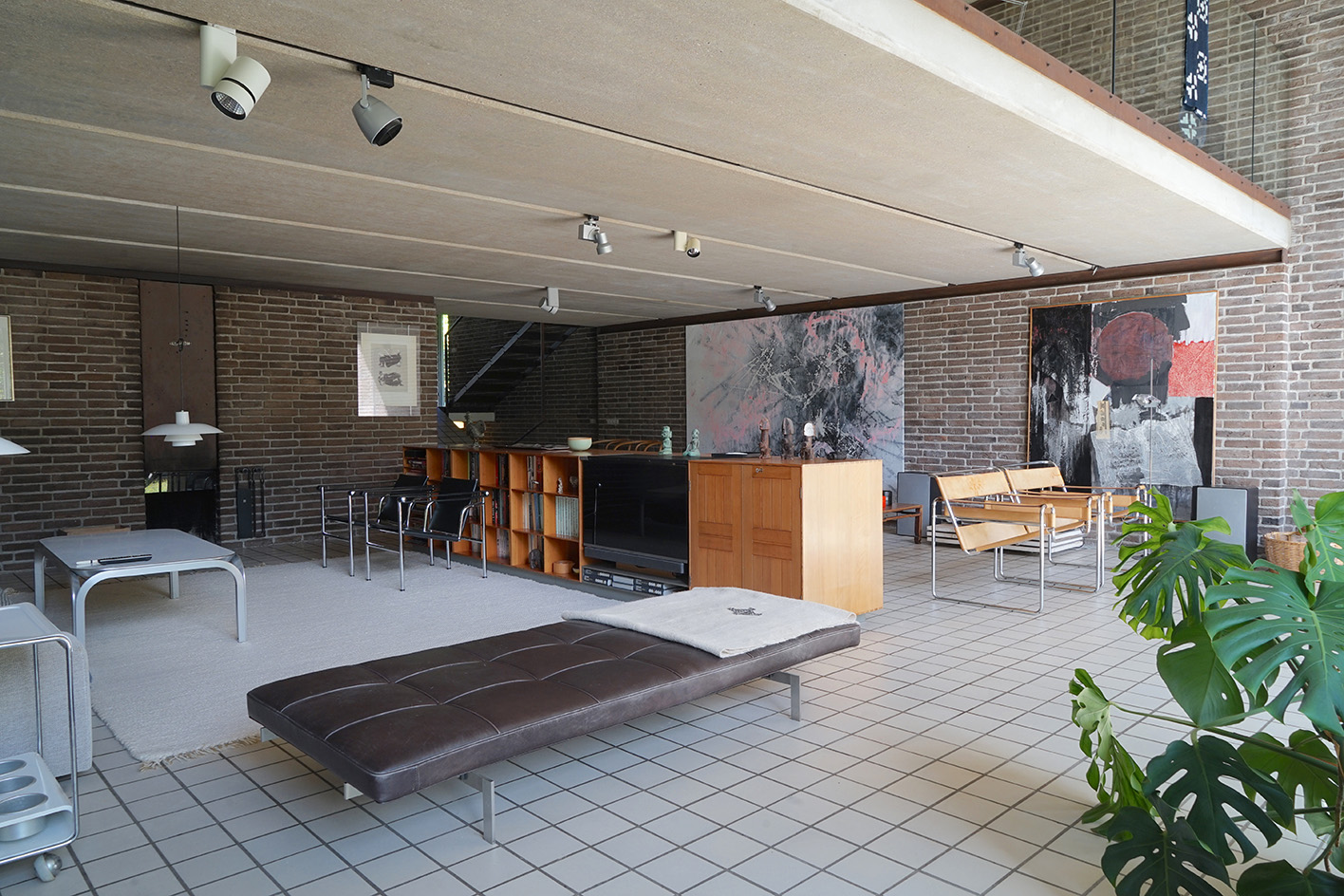 Three lesser-known Danish modernist houses track the country’s 20th-century architecture
Three lesser-known Danish modernist houses track the country’s 20th-century architectureWe visit three Danish modernist houses with writer, curator and architecture historian Adam Štěch, a delve into lower-profile examples of the country’s rich 20th-century legacy